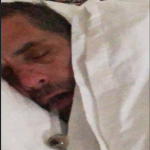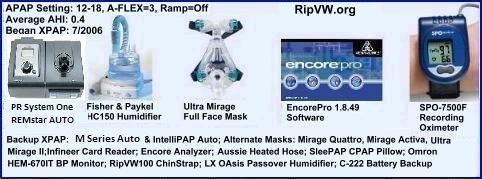And therefore you of course set yourself up with a minimal pressure of 4 and a maximum of 20.PolyMar wrote:I am an experienced sleep professional (RPSGT) who is on PAP.
While the idea of APAP is great I myself do not believe it is worth the risk of not getting to sleep at your "perfect pressure". Once I realized my APAP was not working like I thought I decided to test all major APAP devices available on the market, since I am a DME Coordinator [I have the benefit of being able to call my manufacurers reps and request to demo there APAP devices at no charge.
And you set them all up at 4 - 20
A very good reason to use and APAP for therapy is when your pressure needs vary during the night - for instance you need much less on your side than on your back. A device the blows at your optimal pressure for you Total Sleep Time is, by definition, a fixed pressure device. Not an automatic one.I received the same result with all APAP devices, none blew at my optimal pressure for my TST (Total Sleep Time).
Some people doubtlessly feel much better at fixed pressure. If they have an automatic machine, they can set it up to work at fixed pressure.
Some people do much better when their pressure varies. If they have a fixed pressure machine they cannot set it up to vary the pressure.
Great advice.If you are interested in a device that adds additional comfort I recommend you try ResMed's S8 CPAP model which offers EPR(Expiratory Pressure Relief) or Respironics CPAP with C-Flex. What C-Flex and ERP do is minutely drop pressure during exhalation to make breathing more comfortable.
One of the problems with automatic machines, is that most companies don't distinguish the hoopla of "hey, this will titrate automatically" to "here's how this will work when doing therapy". The companies would have us believe the devices are great at preempting respiratory events -- they rarely are.You are prescribed a pressure for a reason, and hopefully you were able to work with an RPSGT, not just a sleep tech, which better assures you proper treatment, this is because RPSGT's have sat for their sleep medicine boards/registry and passed. PAP therapy is a process in the beginning, it takes time to acclimate however it is worth it in the end. Keep in mind that just like any other industry PAP manufacturers have a tendency to push the most expensive product and while this product might look attractive many times you end up losing some theraputic benefit thus doing yourself an injustice.
For good therapy, you can't afford to set the minimum too low, too far from the pressure you need to keep you airway patent.
O.



















